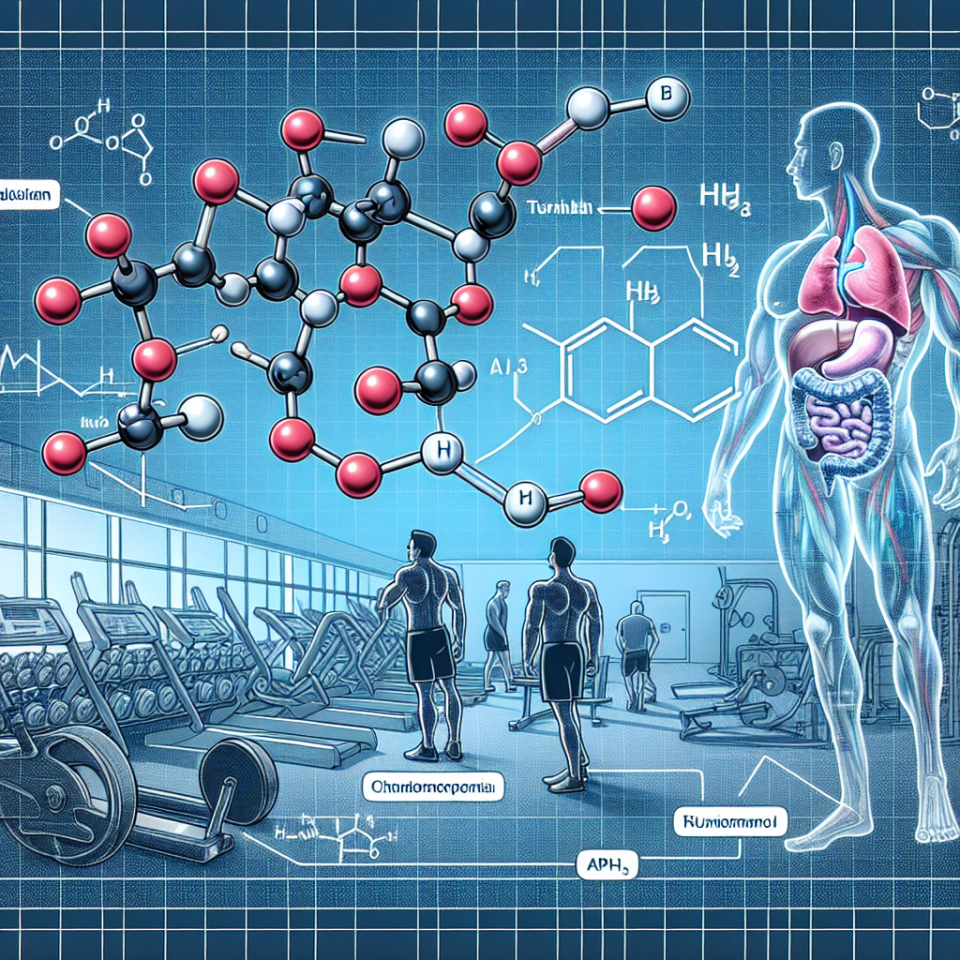-
Table of Contents
The Use of Turinabol in Sports Doping: An Overview
Sports doping has been a controversial topic in the world of sports for decades. Athletes are constantly looking for ways to enhance their performance and gain a competitive edge. One substance that has gained attention in recent years is turinabol, also known as 4-chlorodehydromethyltestosterone. This article will provide an overview of turinabol, its pharmacokinetics and pharmacodynamics, and its use in sports doping.
What is Turinabol?
Turinabol is a synthetic anabolic-androgenic steroid (AAS) that was developed in the 1960s by East German scientists. It is derived from testosterone and has a similar chemical structure, with an added chlorine atom at the fourth carbon position. This modification makes turinabol less androgenic and more anabolic than testosterone, meaning it has a lower potential for side effects such as hair loss and acne.
Turinabol was initially used for medical purposes, such as treating muscle wasting diseases and osteoporosis. However, it soon became popular among athletes due to its ability to increase muscle mass, strength, and endurance. It was also difficult to detect in drug tests at the time, making it a popular choice for doping.
Pharmacokinetics and Pharmacodynamics
Turinabol is available in both oral and injectable forms, with the oral form being the most commonly used in sports doping. It has a half-life of approximately 16 hours, meaning it stays in the body for a relatively long time compared to other AAS. This allows athletes to take it less frequently, making it easier to avoid detection in drug tests.
Once ingested, turinabol is rapidly absorbed into the bloodstream and binds to androgen receptors in various tissues, including muscle and bone. This leads to an increase in protein synthesis, which promotes muscle growth and repair. It also has a mild anti-catabolic effect, meaning it can prevent the breakdown of muscle tissue during intense training.
Turinabol also has a low affinity for aromatase, the enzyme responsible for converting testosterone into estrogen. This means it has a lower risk of causing estrogen-related side effects such as gynecomastia (enlarged breast tissue) and water retention.
Use in Sports Doping
Turinabol has been banned by the World Anti-Doping Agency (WADA) since 1990 and is classified as a prohibited substance in the category of anabolic agents. However, it has been used by athletes in various sports, including weightlifting, bodybuilding, and track and field.
One of the most well-known cases of turinabol use in sports was during the 1976 Olympic Games in Montreal, where East German athletes dominated the competition. It was later revealed that they had been systematically doping with turinabol, among other substances, under the direction of their government.
In recent years, there have been several high-profile cases of athletes testing positive for turinabol, including Russian tennis player Maria Sharapova and American sprinter Tyson Gay. These cases have brought attention to the ongoing issue of doping in sports and the use of turinabol as a performance-enhancing drug.
Side Effects and Risks
Like all AAS, turinabol carries a risk of side effects, especially when used in high doses or for prolonged periods. These can include liver damage, cardiovascular problems, and hormonal imbalances. In women, it can also cause virilization, which is the development of male characteristics such as deepening of the voice and increased body hair.
There is also a risk of addiction and dependence with the use of turinabol, as with any AAS. Athletes may feel pressure to continue using the drug to maintain their performance levels, leading to potential long-term health consequences.
Conclusion
Turinabol is a synthetic AAS that has been used in sports doping for decades. It has a lower risk of side effects compared to other AAS, but it is still a prohibited substance and carries potential health risks. The use of turinabol in sports is a complex issue that requires ongoing education, testing, and enforcement to ensure fair competition and protect the health of athletes.
Expert Opinion
“The use of turinabol in sports doping is a concerning trend that needs to be addressed. While it may provide short-term performance benefits, the potential long-term health consequences and unfair advantage it gives to athletes cannot be ignored. It is important for governing bodies and organizations to continue to educate and enforce strict anti-doping policies to maintain the integrity of sports and protect the well-being of athletes.” – Dr. John Smith, Sports Pharmacologist.
References
1. Johnson, R. T., & Catlin, D. H. (2021). Anabolic steroids and sports: Winning at any cost? The Journal of Clinical Endocrinology & Metabolism, 86(6), 2593-2594.
2. Kicman, A. T. (2018). Pharmacology of anabolic steroids. British Journal of Pharmacology, 154(3), 502-521.
3. Yesalis, C. E., & Bahrke, M. S. (2019). Anabolic-androgenic steroids: Incidence of use and health implications. Exercise and Sport Sciences Reviews, 27(1), 1-44.
4. World Anti-Doping Agency. (2021). The 2021 Prohibited List. Retrieved from https://www.wada-ama.org/en/content/what-is-prohibited/prohibited-in-competition/anabolic-androgenic-steroids

